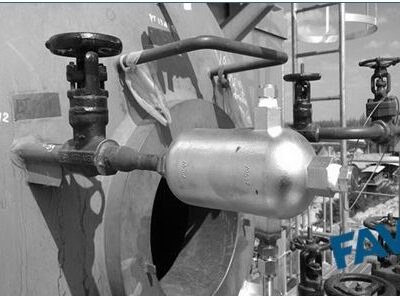
Construction takeoff is a critical component in the planning and execution of construction projects. Master construction takeoff can significantly impact the accuracy of project estimates, ultimately leading to successful project completion. This comprehensive guide will help you understand the importance of construction takeoff, essential techniques, tools, and best practices to ensure your project estimates are precise and reliable.
Introduction to Construction Takeoff
Importance of Accurate Construction Takeoff
Accurate construction takeoff is essential for creating reliable project estimates. It ensures that all necessary materials and resources are accounted for, minimizing the risk of cost overruns and project delays. Proper takeoff can lead to more efficient resource allocation, better budgeting, and overall project success.
Overview of the Construction Takeoff Process
Construction takeoff involves quantifying the materials, labor, and equipment needed for a construction project. This process is typically performed by estimators who analyze project plans and specifications to determine the quantities and costs associated with the project.
Understanding Construction Takeoff
Definition and Purpose
Construction takeoff, also known as quantity takeoff, is the process of listing and measuring all the materials and resources required for a construction project. The primary purpose of construction takeoff is to provide a detailed and accurate estimate of the project’s costs, which is crucial for budgeting and planning.
Key Components of Construction Takeoff
The main components of construction takeoff include:
- Material Quantities: Measuring the amount of each material needed.
- Labor Costs: Estimating the labor required for each phase of the project.
- Equipment Costs: Identifying the equipment needed and associated costs.
- Subcontractor Costs: Including costs for any subcontracted work.
Essential Techniques for Accurate Construction Takeoff
Detailed Quantity Takeoff
A detailed quantity takeoff involves a meticulous review of project plans and specifications to ensure all materials and resources are accurately quantified. This includes breaking down the project into smaller components and measuring each item precisely.
Cost Estimation Methods
To master construction takeoff services, estimators employ various cost estimation methods tailored to the project’s specifics. These techniques include unit cost estimating, where unit costs are applied to measured quantities, assemblies estimating, which groups related items for collective cost estimation, and square foot estimating, a method based on project square footage. Each method plays a crucial role in accurately determining project costs and ensuring effective resource allocation.
Tools and Software for Construction Takeoff
Overview of Popular Takeoff Tools
There are several digital tools and software available to assist with construction takeoff. These tools streamline the process, reduce errors, and enhance efficiency. Some popular takeoff tools include:
- Bluebeam Revu
- PlanSwift
- ProEst
Benefits of Using Digital Tools
When it comes to master construction takeoff services, leveraging digital tools can bring about significant advantages. These tools contribute to increased accuracy through automated calculations, minimizing the chances of human error in cost estimations. Additionally, they save time by expediting the takeoff process and enable enhanced collaboration among team members through cloud-based platforms, facilitating seamless communication and data sharing for improved project coordination.
Steps to Master Construction Takeoff
Gathering Project Documents
The first step in master construction takeoff is to gather all necessary project documents, including plans, specifications, and any other relevant information. Having a complete set of documents ensures that no details are overlooked.
Breaking Down Project Components
Breaking down the project into smaller components makes it easier to manage and measure each item. This step involves creating a detailed list of all materials, labor, and equipment required for the project.
Accurate Measurements and Calculations
Accurate measurements are crucial for reliable takeoff. Use precise tools and methods to measure quantities, and double-check calculations to ensure accuracy. This includes verifying dimensions and quantities against project plans.
Common Challenges and Solutions in Construction Takeoff
Dealing with Incomplete Plans
Incomplete or unclear plans can pose a significant challenge during takeoff. To address this, communicate with project stakeholders to clarify any ambiguities and ensure you have the most up-to-date information.
Managing Complex Projects
Complex projects with numerous components can be overwhelming. Break down the project into manageable sections and tackle each section systematically. Use digital tools to organize and track progress.
Best Practices for Effective Construction Takeoff
Consistency and Standardization
Consistency and standardization in takeoff processes lead to more reliable results. Develop standardized procedures and templates to ensure uniformity in measurements and calculations.
Regular Reviews and Updates
Regularly review and update takeoff data to account for any changes in project scope or specifications. This helps maintain accuracy and ensures that estimates remain relevant throughout the project lifecycle.
Role of Technology in Enhancing Construction Takeoff
Automation and Efficiency
Technology plays a significant role in master construction takeoff by automating repetitive tasks and improving efficiency. Automated tools can quickly generate accurate takeoff data, freeing up estimators to focus on more critical tasks.
Real-Time Collaboration and Data Sharing
Digital tools enable real-time collaboration and data sharing among project team members. This enhances communication, reduces errors, and ensures everyone is working with the most current information.
Case Studies: Successful Construction Takeoff Implementations
Examples from Industry Leaders
Examining case studies from industry leaders provides valuable insights into successful construction takeoff practices. These examples highlight the techniques and tools used to achieve accurate estimates and project success.
Lessons Learned and Best Practices
Analyzing lessons learned from case studies helps identify best practices that can be applied to your own projects. This includes understanding common pitfalls and how to avoid them.
Future Trends in Construction Takeoff
Emerging Technologies
Emerging technologies, such as artificial intelligence (AI) and machine learning, are set to revolutionize master construction takeoff. These technologies can analyze vast amounts of data quickly and provide more accurate estimates.
Predictions for the Future
Future trends in construction takeoff include increased use of cloud-based tools, greater integration with project management systems, and a focus on sustainability. Staying ahead of these trends can give you a competitive edge.
Related Article: 10 Benefits of Pursuing a Master in Construction Project Management
Conclusion
Master construction takeoff is essential for accurate project estimates and overall project success. By understanding the key components, utilizing the right tools, and following best practices, you can enhance your takeoff processes and contribute to successful project outcomes. Embrace technology, stay updated with industry trends, and continuously improve your skills to become a proficient construction estimator.







